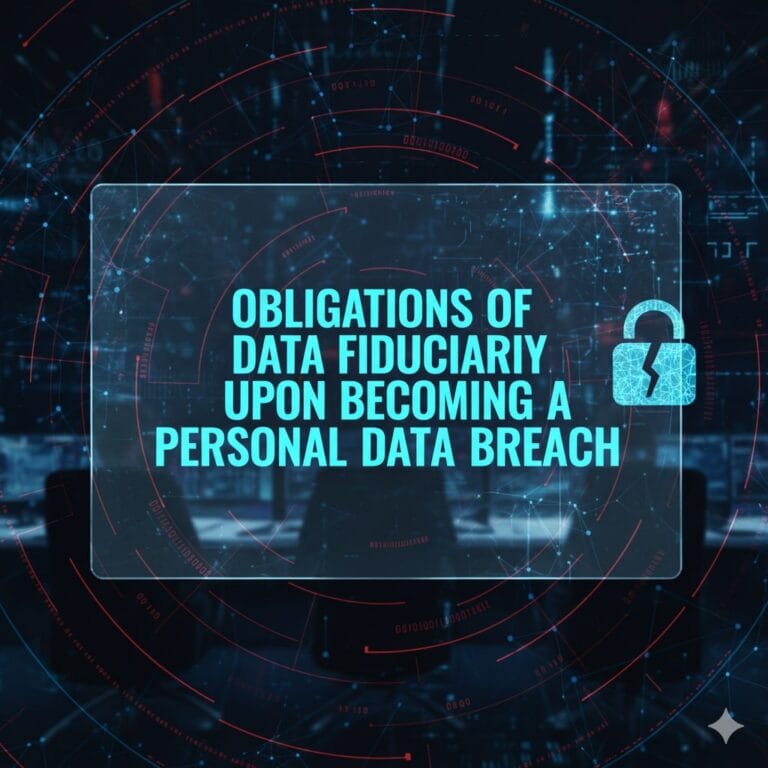
The Digital Personal Data Protection (DPDP) Act and its accompanying Rules prescribe stringent obligations on Data Fiduciaries once they become aware of a personal data breach. These obligations are designed to ensure transparency, timely communication, and immediate mitigation to protect the rights and interests of Data Principals and to maintain regulatory oversight. The provisions impose dual reporting responsibilities: (a) notification to affected Data Principals, and (b) reporting to the Data Protection Board.
Once a Data Fiduciary becomes aware of a personal data breach, it must promptly notify each affected Data Principal. This is a mandatory requirement and is central to ensuring that individuals can take timely protective actions.
1.1 Mode of Communication
1.2 Mandatory Contents of Notification
The communication must be concise, clear, and plain, covering the following:
(a) Description of the Breach
(b) Relevant Consequences
(c) Mitigation Measures by the Data Fiduciary
(d) Safety Measures for Data Principals
(e) Contact Information
This ensures that Data Principals are fully informed and empowered to safeguard their personal interests.
Alongside notifying Data Principals, the Data Fiduciary must inform the Data Protection Board promptly after becoming aware of the breach. This ensures regulatory visibility and supervision.
2.1 Initial Intimation Without Delay
The first intimation must include:
This enables the Board to assess the severity and initiate oversight.
Within 72 hours of becoming aware of the breach, the Data Fiduciary must submit an expanded report to the Board.
A longer period may be allowed, but only upon a written request and approval.
The detailed report must contain:
(i) Updated and Detailed Description
(ii) Broad Facts and Circumstances
(iii) Mitigation Measures
(iv) Responsible Person(s) Identification
(v) Remedial Measures to Prevent Recurrence
(vi) Confirmation of Notifications to Data Principals
This 72-hour reporting requirement ensures accountability and permits the Board to monitor corrective actions and impose directions where necessary.
These obligations are central to the DPDP Act’s emphasis on transparency, accountability, and protection of personal data. Key compliance points include:
To remain compliant, Data Fiduciaries must implement:
Failure to comply may expose the Data Fiduciary to enforcement actions, penalties, and directions from the Board.
Disclaimer: The information contained in this Article is intended solely for personal non-commercial use of the user who accepts full responsibility of its use. The information in the article is general in nature and should not be considered to be legal, tax, accounting, consulting or any other professional advice. We make no representation or warranty of any kind, express or implied regarding the accuracy, adequacy, reliability or completeness of any information on our page/article.